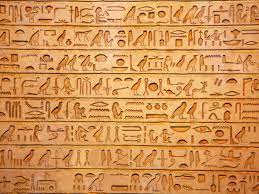Welcome to “Top Ten Egypt,” where we embark on an exciting journey to unravel the enigmatic language of Ancient Egypt. Join us as we delve into the fascinating realm of hieroglyphics, demystify the hieratic script, and unearth the linguistic wonders that shaped the civilization of the Pharaohs.
The Evolution of Egyptian Writing:
Ancient Egyptian language has its roots dating back more than 5,000 years. Initially, the script consisted of primitive pictograms and symbols, slowly evolving into a complex system of hieroglyphics—a fusion of ideograms, phonograms, and determinatives. This hieroglyphic system served as a means of communication, record-keeping, and sacred inscription throughout Egypt’s long and illustrious history.
Hieroglyphics: Unveiling the Symbols:
Hieroglyphics, a writing system as beautiful as it is intricate, adorned the walls of temples, tombs, and monuments across Egypt. Composed of hundreds of pictorial symbols, each conveying a specific concept or sound, hieroglyphics allowed scribes to explore the rich tapestry of the Egyptian language. From depictions of animals and deities to abstract concepts, these symbols opened a gateway to the Pharaohs’ world.
The Role of Scribes:
The ancient Egyptians held the title of “scribe” in high regard, as they were the learned few entrusted with the noble task of reading, writing, and preserving the written word. Scribes were essential in administrative, religious, and cultural affairs, employing their intricate knowledge of hieroglyphics to record historical events, compile religious texts, and convey the Pharaohs’ decrees.
The Hieratic Script: Simplifying Communication
As the hieroglyphic system grew complex, a simplified script emerged, known as hieratic. Hieratic script retained the essence of hieroglyphics but featured a more cursive and streamlined form. This script was primarily used for everyday writing, with scribes employing it on papyrus scrolls and pottery shards. Hieratic allowed for quicker writing, making it more accessible to a wider range of individuals.
Deciphering the Rosetta Stone:
The decipherment of the Rosetta Stone in 1822 marked a significant breakthrough in understanding the ancient Egyptian language. Inscribed with a decree in Greek, Demotic, and hieroglyphics, the stone provided the key to unlocking the mysteries of hieroglyphs. The tireless efforts of scholars such as Jean-François Champollion enabled the world to comprehend the once-opaque language of the Pharaohs.
Enduring Legacy and Modern Understanding:
The study of ancient Egyptian language continues to captivate linguists, historians, and enthusiasts alike. The exploration of hieroglyphics and the decipherment of countless texts have provided invaluable insights into the cultural, religious, and societal aspects of ancient Egypt. Today, researchers tirelessly work to expand our understanding and preserve this rich linguistic heritage for future generations.
The ancient Egyptian language stands as a testament to the intellectual prowess and cultural depth of this magnificent civilization. From the majestic hieroglyphics adorning temple walls to the practical hieratic script, the written language facilitated communication, preserved history, and offered a glimpse into the Pharaohs’ world. Embrace the timeless allure of ancient Egyptian language as you immerse yourself in the wonders of Egypt with “Top Ten Egypt.”
Let the echoes of the Pharaohs guide you as we embark on a linguistic odyssey through the profound history of Egypt. Through the hieroglyphics and scripts, we unveil the veils of antiquity and gain profound insights into the language that shaped a remarkable civilization. Join “Top Ten Egypt” as we unravel the mystique of the ancient Egyptian language, leaving no hieroglyphic stone unturned.



Comment (0)